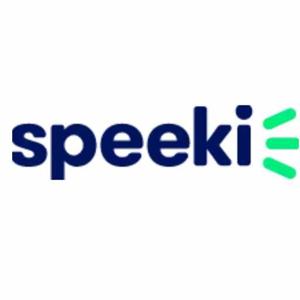
The International Financial Reporting Standards (IFRS) have been a cornerstone of global financial transparency and consistency. With the introduction of IFRS S1 and IFRS S2, the International Sustainability Standards Board (ISSB) has taken a significant step toward enhancing sustainability and climate-related disclosures. These new standards aim to standardise sustainability reporting, helping investors and stakeholders make informed decisions. This blog explores the core requirements of IFRS S1 and S2, their importance, and how organisations can ensure compliance.
Overview of IFRS S1 and IFRS S2
IFRS S1: General Requirements for Disclosure of Sustainability-related Financial Information
IFRS S1 establishes a framework for disclosing sustainability-related information that is material to the entity's financial position, performance, and future prospects. It requires entities to provide a comprehensive view of the sustainability risks and opportunities they face, enabling investors to assess the potential impact on enterprise value.
Key aspects of IFRS S1 include:
Materiality and Scope: Entities must disclose sustainability-related information that is likely to influence investors' decisions. This includes information about governance, strategy, risk management, and metrics used to monitor sustainability risks and opportunities.
Governance Disclosure: Organizations need to describe the governance processes and structures in place to manage sustainability-related risks and opportunities. This includes the role of the board and management in overseeing these processes.
Risk and Opportunity Management: IFRS S1 requires entities to disclose how they identify, assess, and manage sustainability-related risks and opportunities.
IFRS S2: Climate-related Disclosures
IFRS S2 focuses specifically on climate-related disclosures, aligning closely with the Task Force on Climate-related Financial Disclosures (TCFD) recommendations. It requires entities to provide detailed information on how climate risks and opportunities affect their financial position and performance.
Key aspects of IFRS S2 include:
Climate-related Governance: Entities must disclose the governance processes for managing climate-related risks and opportunities, including the roles of management and the board.
Climate Strategy and Impact: Organizations should describe the actual and potential impacts of climate risks and opportunities on their business model and financial performance.
Scenario Analysis: IFRS S2 encourages the use of scenario analysis to assess the resilience of the entity’s strategy in different climate scenarios.
Risk Management and Metrics: Companies are required to disclose the processes they use to identify, assess, and manage climate-related risks, along with the metrics and targets used to measure and manage these risks.
Key Reporting and Disclosure Requirements
1. Double Materiality Approach
IFRS S1 and S2 introduce the concept of double materiality, where entities must consider both financial materiality (impact on enterprise value) and environmental and social materiality (impact on society and the environment). This approach ensures a more comprehensive understanding of an entity’s sustainability impact.
2. Consistency and Connectivity with Financial Statements
A critical requirement under IFRS S1 and S2 is that sustainability-related disclosures should be consistent with an entity’s financial statements. This ensures that users can connect sustainability-related risks and opportunities to the entity’s financial performance and future outlook.
3. Industry-Specific Disclosure Standards
Both IFRS S1 and S2 encourage the use of industry-specific disclosure standards to ensure that disclosures are relevant and comparable across industries. Entities are expected to use frameworks like the Sustainability Accounting Standards Board (SASB) standards to provide detailed and industry-specific information.
4. Reporting Period and Location
Entities are required to present their sustainability-related disclosures at the same time as their financial statements and include them in the annual report. This alignment enhances comparability and ensures that sustainability-related information is treated with the same level of rigor as financial disclosures.
5. Assurance and Verification
To strengthen trust in the disclosed information, IFRS S1 and S2 emphasize the need for assurance and verification of sustainability-related information. External assurance provides investors with confidence that the information disclosed is reliable and accurate.
Challenges and Implementation Considerations
Data Collection and Management: One of the biggest challenges for organisations is collecting high-quality, reliable data on sustainability and climate-related risks. Companies need to invest in data management systems and processes to ensure compliance.
Internal Capacity Building: Many organisations will need to build internal capacity and expertise in sustainability reporting. This includes training finance, risk management, and sustainability teams to understand and apply IFRS S1 and S2 requirements effectively.
Scenario Analysis and Risk Assessment: Conducting robust scenario analysis is essential under IFRS S2. Organisations should develop models that assess how different climate scenarios may impact their financial performance and business strategy.
Conclusion
IFRS S1 and S2 mark a transformative shift in sustainability and climate-related disclosure practices. By standardising how organisations disclose sustainability-related risks and opportunities, these standards enhance transparency and comparability across industries and geographies. Compliance with IFRS S1 and S2 will not only strengthen investor confidence but also enable organisations to better manage their sustainability risks and opportunities. As these standards become mandatory, companies should prioritise developing robust governance, risk management, and data management systems to meet the stringent reporting and disclosure requirements of IFRS S1 and S2.














Write a comment ...